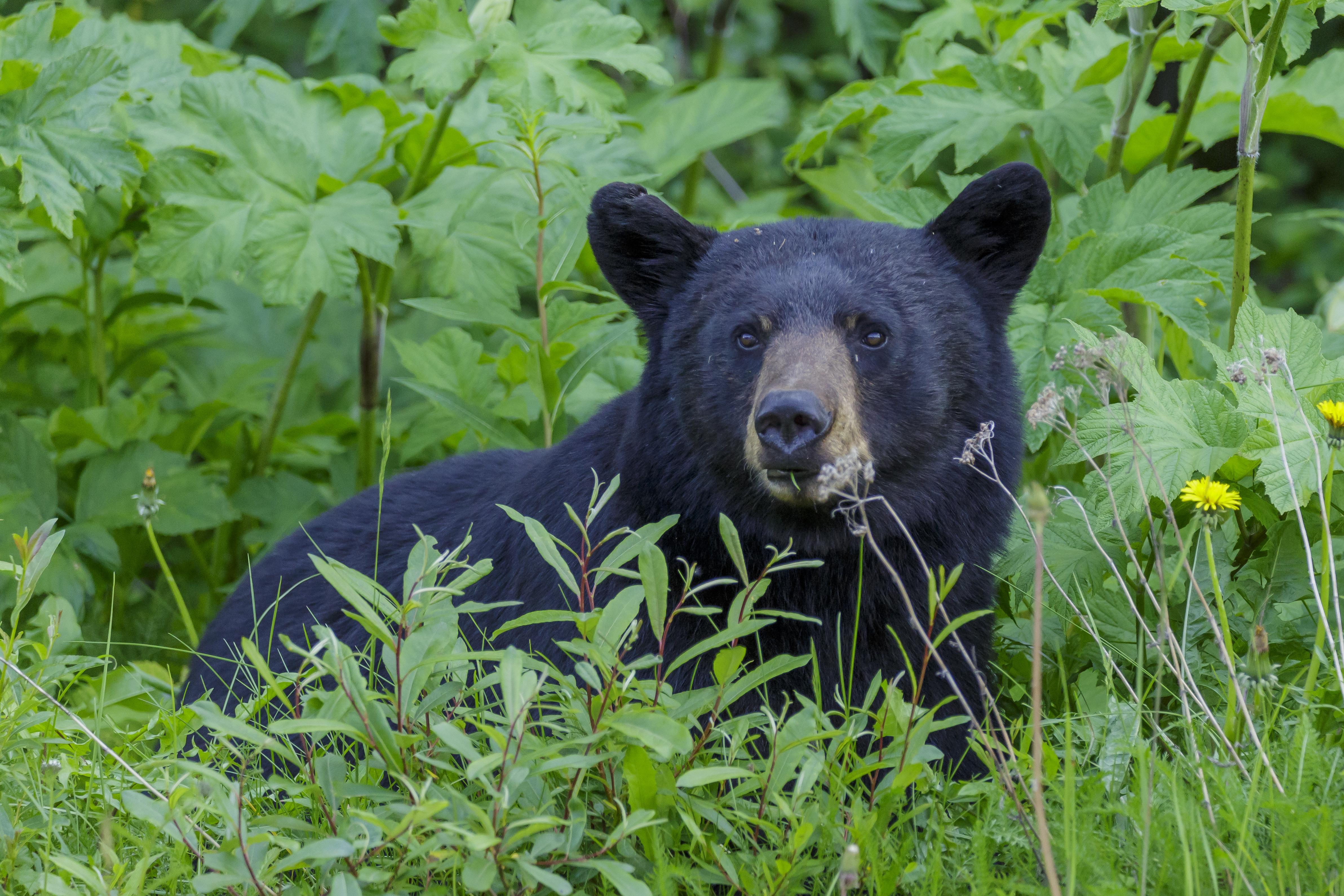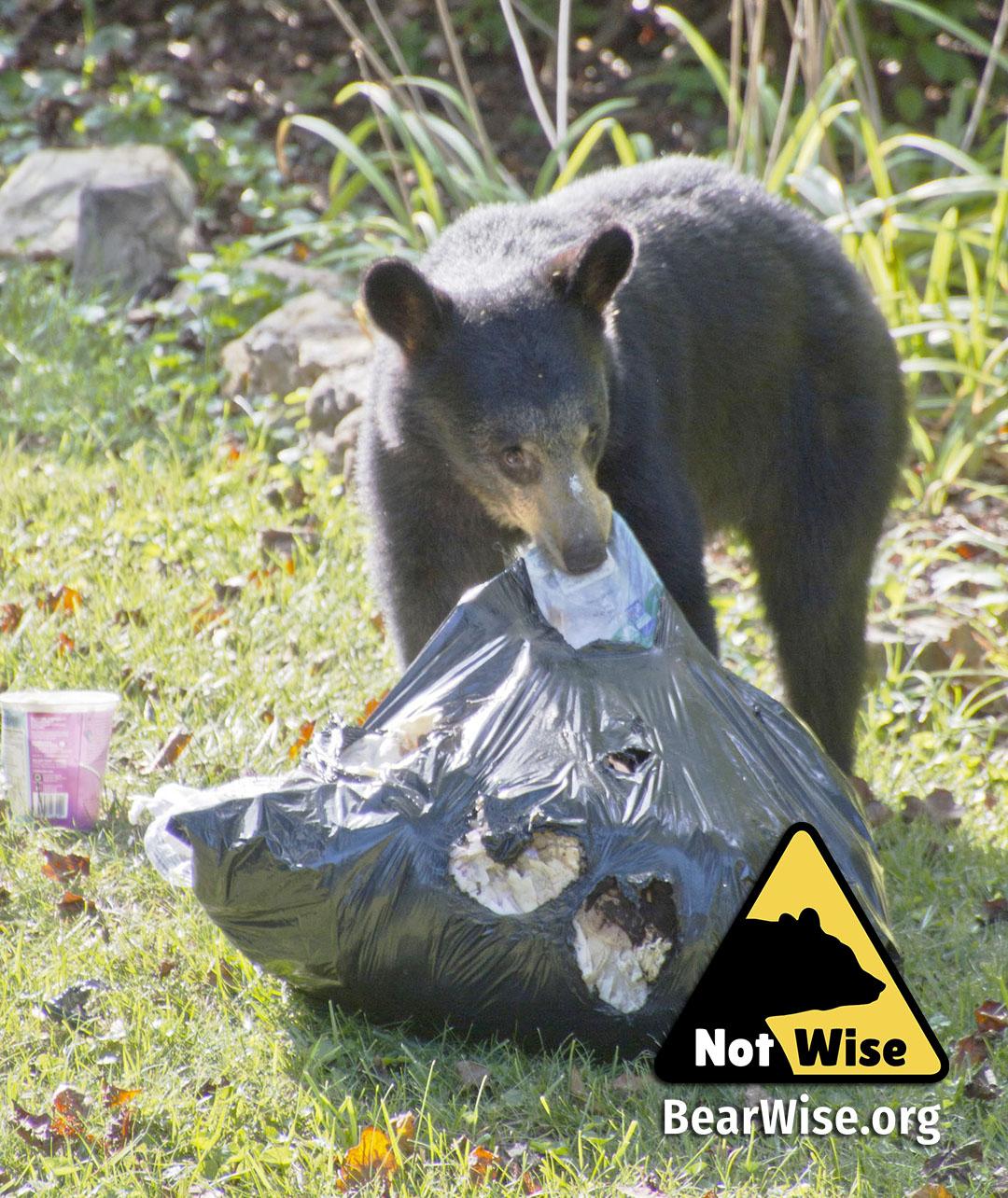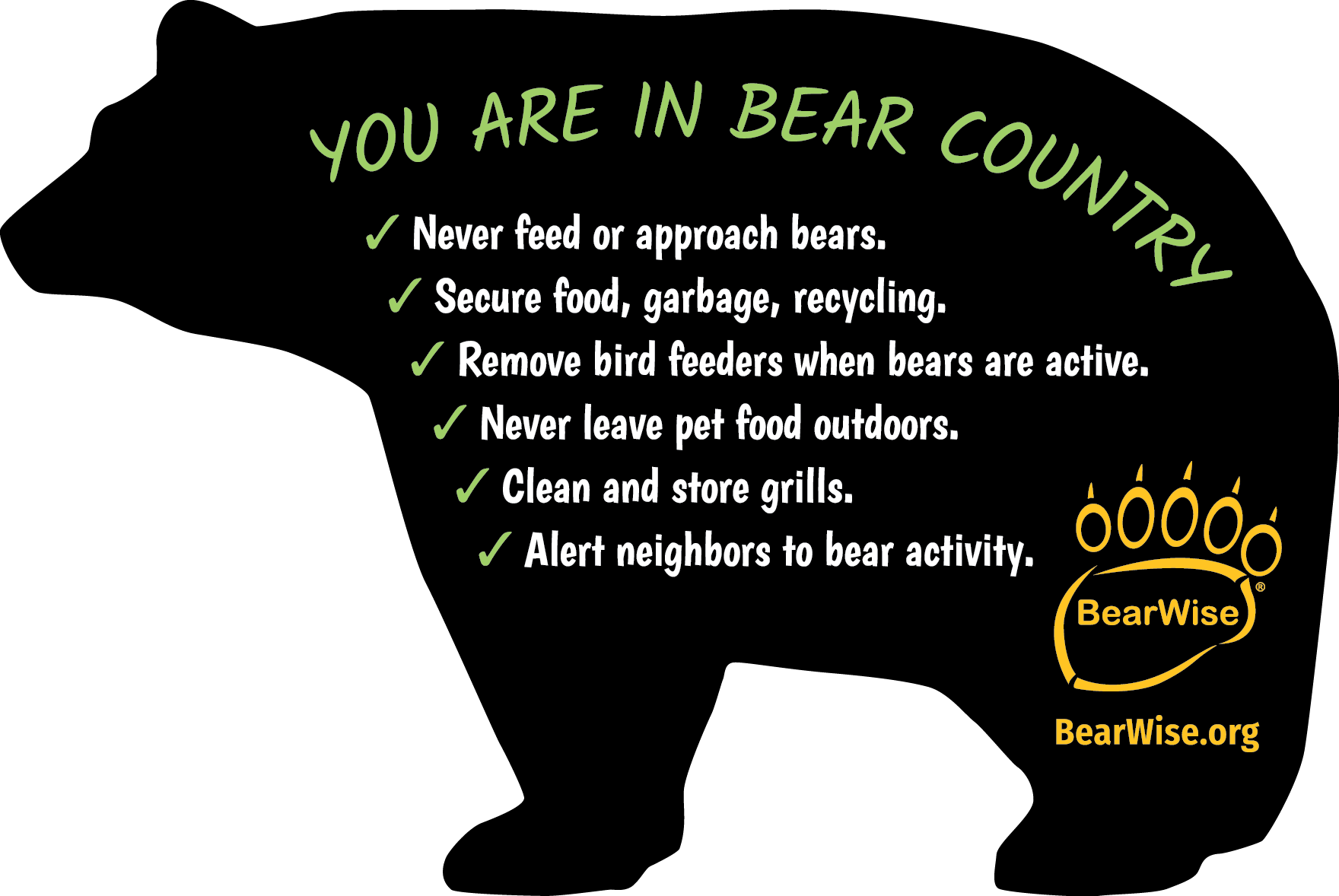
Black bear populations are on the rise throughout their range. The BearWise program is designed to keep bears and people safe./Thomas Fuhrmann
Keeping Black Bears Wild And People Safe
In the Great Smokies, Shenandoah, and elsewhere, black bear populations are growing. The BearWise program is designed to protect our ursine friends—and ourselves, too.
By Kim O'Connell
“Bear jam,” my driver said. It was early on an overcast October morning in Great Smoky Mountains National Park. Before sunrise, dozens of cars had lined up on the road to Cades Cove, a verdant basin in the park dotted with old homesteads and churches. Once the park ranger opened the entrance gate, cars began moving slowly and steadily around the 11-mile road that loops through the Cove. I was a passenger, riding with three others, when we came around a curve and slammed on the brakes, along with several others idling in the middle of the road.
“Yup, this has to be a bear jam,” my driver repeated. Sure enough, as traffic gradually inched forward, we spotted a large black bear about 15 yards off the roadway, munching on vegetation and generally minding its own business. We kept our distance and zoomed in with our camera phones to take photos. But we saw several people walk within a few yards of the bear to get a better shot, creating a situation that could potentially be dangerous for both the people and the bear.
Later, when I relayed this story in a meeting with Bill Stiver, longtime wildlife biologist at the park, and Laurel Rematore, chief executive officer of the Great Smoky Mountains Association, the park’s nonprofit cooperating association, they were not surprised. For the most visited national park in the United States, and one with a growing population of black bears (the current estimate is roughly 1,900, more than triple the number 30 years ago) and bustling gateway towns like Pigeon Forge and Gatlinburg, Tennessee, human-bear interactions are inevitable. Stiver and Rematore are both partners in the growing BearWise™ program, designed to lessen these kinds of interactions and make them safer.
Although black bear attacks on humans are uncommon, plenty of negative outcomes are still possible when bears and humans come near each other. Bears can break into garbage cans and buildings, create traffic hazards, and wreak havoc in campgrounds. Bears themselves might be hurt or killed, or they might need to go through the process of being relocated. Stiver says that the park has to handle about 45 bears a year for trapping and relocating, and about two bears a year must be euthanized. Black bear populations are increasing across their range, too, so these issues aren’t going away.
In response, black bear biologists and state wildlife agencies worked together to create BearWise, which includes an informational website and a collection of (mostly free) educational materials and tools for homeowners, park visitors, hoteliers and rental property owners, educators, and others. Presented in colorful and eye-catching formats, BearWise information includes bear safety tips such as Outdoor BearWise Basics, At-Home BearWise Basics, activity sets for kids, and more.

BearWise encourages people to safely dispose of trash to discourage bears from foraging for human food./BearWise.org
Support for this project came from a consortium of state agencies across the Southeast and nonprofit associations, including a donation to GSMA from Wild Tribute, a national-park-themed apparel company whose “4 the Parks” program donates 4 percent of its proceeds to park projects.
“It was quite obvious that we all have the same issues, the same struggles, the same challenges,” says Dan Gibbs, black bear program leader for the Tennessee Wildlife Resources Agency and a driving force behind BearWise. “We decided that we need to work together on some consistent messaging, so that people traveling to and from different places recognize it. If they come to trust it at home in Florida, for example, they are more likely to follow the guidance elsewhere.”
The idea was to create memorable and distinctive messaging about bear safety, not unlike the Smokey Bear “Only You…” campaign about wildfires. Bears roam farther than people might realize, Stiver says, so it’s crucial that parks, communities, governments, and other interested parties work together to keep bears and people safe. He cites recent research that found that about 90 percent of male bears and half of female bears traveled outside Great Smoky Mountain's boundaries. “It stressed the importance of working together to fix these issues,” Stiver says.
GSMA’s Rematore supports the BearWise program as both a park supporter and as a homeowner in Gatlinburg, where black bear sightings are common. “Once a bear is conditioned to human food, it’s very difficult to solve the problem,” she says. “What we can be responsible for is our behavior. If we can train humans to be better neighbors, Bill's job would be easier.”
BearWise’s Outdoor Bear Basics flyer, among other things, encourages people to stay in groups in bear country, secure their food in bear-resistant containers, keep dogs leashed, and carry bear spray (and know how to use it). “The word ‘wise’ wasn’t chosen lightly,” Gibbs says. “It’s not enough to have knowledge; you have to use it properly.”
Much of the design and messaging of BearWise is due to the creative marketing team of Linda Masterson and LaVonne Ewing, who manage the program (Masterson is also the author of the handbook Living with Bears, available through the website). “People don’t like to be told what to do without being told why,” Masterson says. “So we answer those questions. Why does it matter to the bears? Why does it matter to you? Why does it matter to your kids and grandkids? BearWise is designed to deliver the information people need to live with bears.”
Back in Cades Cove, eventually the bear moved deeper into the woods and the bear jam broke up. With BearWise, the hope is that the next time a bear comes into view, more people will know the right thing to do.
This article is made possible in part with support from WildTribute.com.

Image courtesy of BearWise.org



Add comment